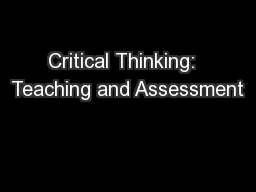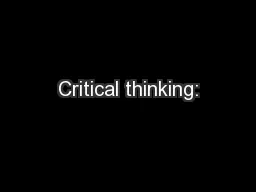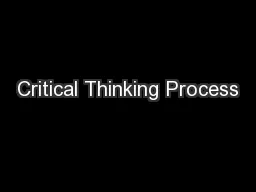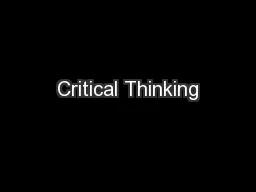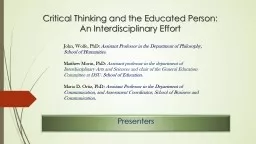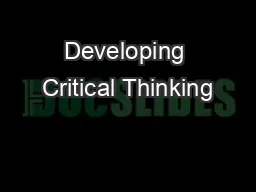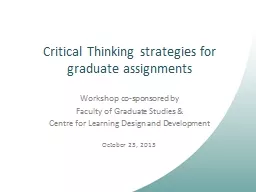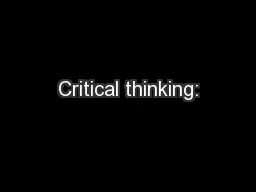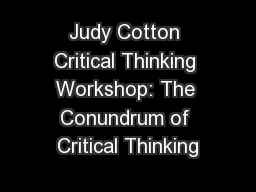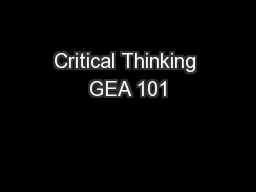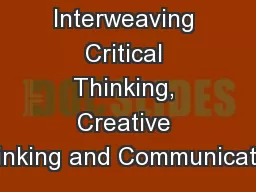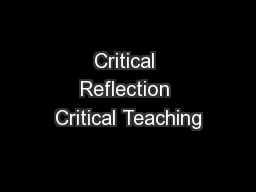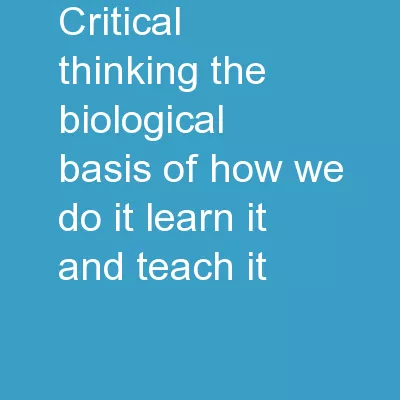PPT-Critical Thinking: Teaching and Assessment
Author : pasty-toler | Published Date : 2018-10-31
Daniel Fasko Jr PhD Definition of Critical Thinking Critical Thinking Skills Critical Thinking Dispositions Instructional Strategies Assessment Techniques Review
Presentation Embed Code
Download Presentation
Download Presentation The PPT/PDF document "Critical Thinking: Teaching and Assessm..." is the property of its rightful owner. Permission is granted to download and print the materials on this website for personal, non-commercial use only, and to display it on your personal computer provided you do not modify the materials and that you retain all copyright notices contained in the materials. By downloading content from our website, you accept the terms of this agreement.
Critical Thinking: Teaching and Assessment: Transcript
Download Rules Of Document
"Critical Thinking: Teaching and Assessment"The content belongs to its owner. You may download and print it for personal use, without modification, and keep all copyright notices. By downloading, you agree to these terms.
Related Documents

